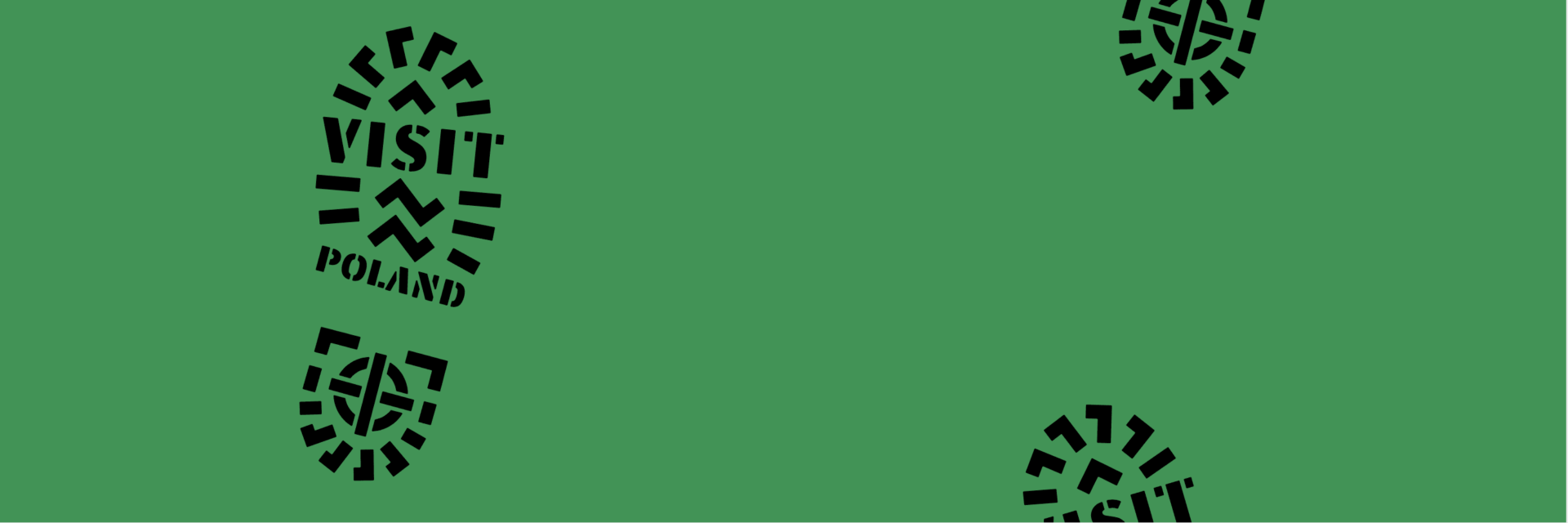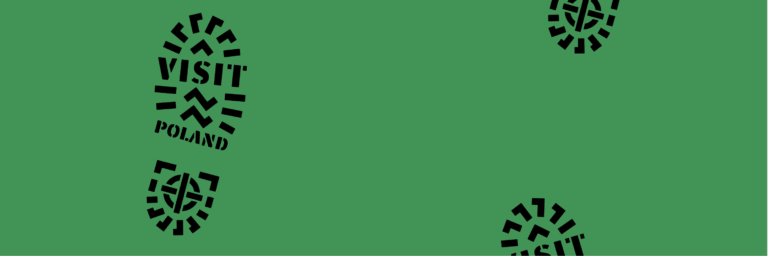by Mariusz Sepioło, Julia Dauksza (FRONTSTORY.PL)
European extremists gather every year in Warsaw to be seen and to count their ranks. Independence March is not a patriotic picnic. It is a show of force, a right-wing, radical, and constantly growing force.
This article was originaly published on frontstory.pl
On 11th of November nationalists marched through the capital of Poland. A day later, Robert Bąkiewicz, who organized the march, announced that it ended with an unquestionable success. It took place legally and in accordance with all the rules and regulations. To his knowledge 150 000 people participated in the event (police statistics lowered that number to around 100 000). For Bąkiewicz, this means one thing. Polish nationalism is in great shape and „nothing will overpower it.”
We have checked who came to Bąkiewicz’s march and from where. We have watched the event closely and at a close range. We have examined our own photos, photos made by press journalists, and photos posted on social media by participants. Based on that, we drew a map of radical organizations and informal groups that marched on 11th of November between Dmowski Roundabout and National Stadium.
Here, we are going to recreate this network of connections and dependencies that bind different groups together; ties that are mostly unknown to general public. Among those groups we will find right-wing extremist, neo-fascist and neo-Nazi organizations, from Poland and abroad, that consider Independence March one of the most important, if not the most important, event of the year. In 2021, it was organized under the auspices of the state, and with an active support of politicians from a ruling coalition.
Frame One: here comes the National Column
When the crowd gathers at Dmowski Roundabout, press photographers start their work, hidden behind metal fences. Some notice Hungarians belonging to a group that glorifies Waffen SS, Poles with Polska Walcząca armbands, and a man wearing a jacket with neo-Nazi bands emblems. They all stand side by side, one flag next to the other.
A tight-knit column marches through the center. It’s made of a few thousand radical nationalists, as they call themselves. They have been gathering in front of Metropol hotel for years. In the past, they did it as a “Black Block – the last voice of radicalism”, nowadays simply as a “Nationalist Column.”
Photo: Kuba Kaminski / @instkaminski
Big, sturdy men in yellow and black balaclavas keep watch and separate the column from other participants. They are members of a Third Position movement and an association that bears the same name.
Their prominence in a world of nationalism is on the rise. In their opinion the best form of government is a system that lies midway between capitalism and socialism. They oppose globalism, multiculturalism, and EU. This ideology was first promoted in Poland by National Revival of Poland (Narodowe Odrodzenie Polski, NOP), a very radical, xenophobic and anti-Semitic party, whose members participated in racist and xenophobic attacks.
Third Position movement has its own association run by Filip Paluch, a die-hard fan of an American anti-abortion activist Rebecca Kiessling. He also claims that everyone has a right to possess weapons.
Why the Third Position is so important on a nationalism spectrum? Because it forms a vital element in a long chain of international relations. It has, and only few groups can claim the same, real connections in Europe and is in contact with radicals from abroad. For example, some of its members work for international think-tank EurHope created by an Italian neo-fascist Gabriele Adinolfi.
A machete for protecting borders
The Third Position works closely with European nationalists and neo-fascists through international EurHope project. Crisis on the border clearly shows that ties linking Polish and European nationalists are a lot stronger than it seemed.
At the end of October German police stopped a group of fifty men on the Polish border. They were all connected to a neo-Nazi organization Die III. Weg, and planned to search for immigrants on the border between Poland and Belarus. Police found clubs, bats, paper sprays and machetes in the trunks of their cars. They were all detained.
Neo-Nazi youth group with ties to NPD, called Aktionsgruppe Zittau, covers its night patrols on social media. Masked men walk along the banks of river Neisse, searching for immigrants.
Their post from 18th of November has no text, only photos. One of those shows two young men with a darker complexion. Both looked terrified.
Rudolf Hess on Telegram
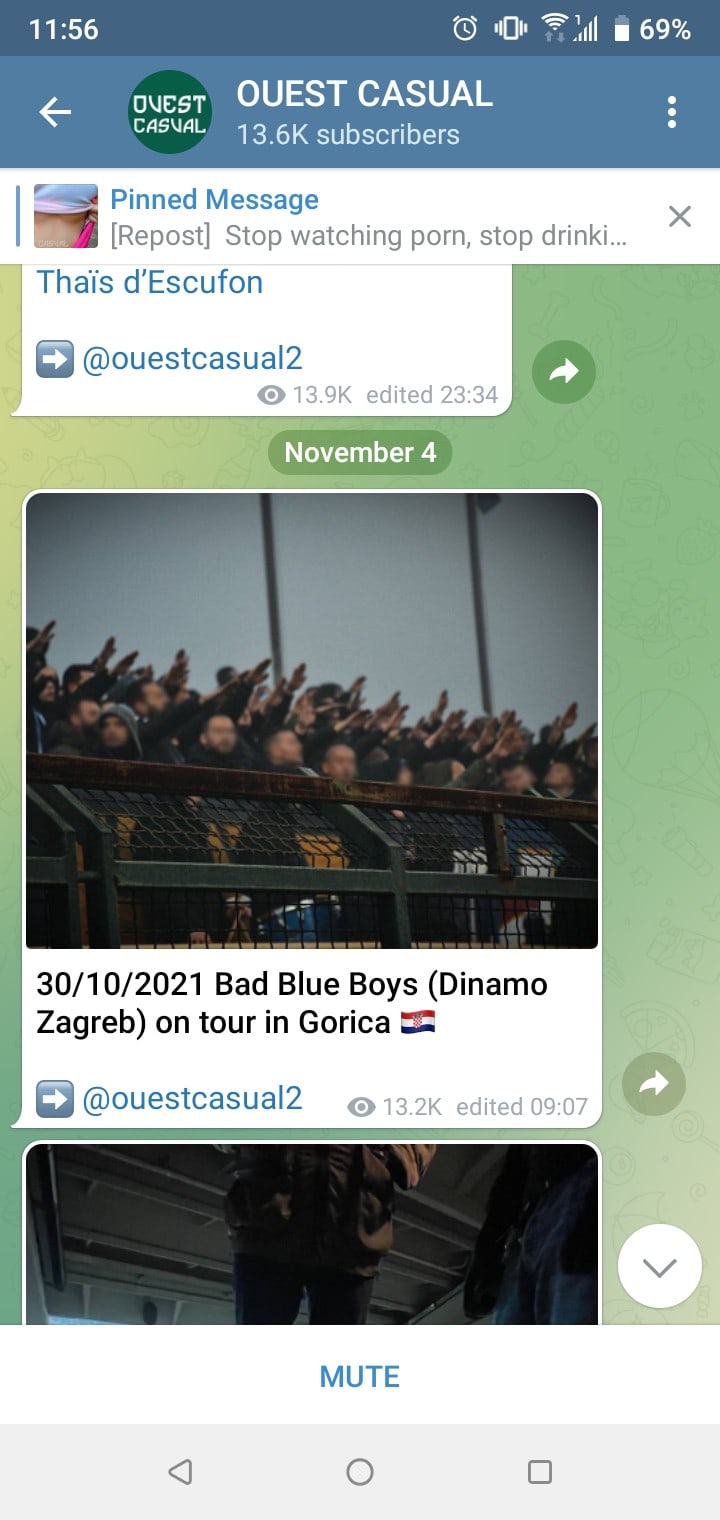
Dinamo Zagreb fans making a Nazi salute. Source: Screenshot from Telegram channel
Let’s get back to Warsaw, on 11th of November. Few moments after the column marches out, it is joined by nationalists from Hungary, Estonia and Italy. Their presence in Warsaw is not a coincidence. On the contrary, Polish nationalists greet their European guests with open arms. They know each other, if only from a virtual world.
We have established that supporters of a Third Position frequently use a Ouest Casual channel on Telegram (French platform for nationalists and football fanatics) to communicate with the rest of the world. It has more than 13 600 subscribers, and publishes news about nationalists’ and neo-fascists’ activities in Europe and around the world, although it’s main target are football hooligans. Few posts covered the Independence March in Warsaw and a picket in Wrocław, where ONR members burned the emblem of a left-wing antifa in public.
Browsing through the channel we will find a video of West Ham supporters singing anti-Semitic chants in front of an Orthodox Jew, and photos of Dinamo Zagreb fans making a Nazi salute.
After 11th of November the channel was used by football hooligans from Hungarian XIII District group, who marched in Warsaw alongside hooligans supporting Ostrovia Ostrów club.
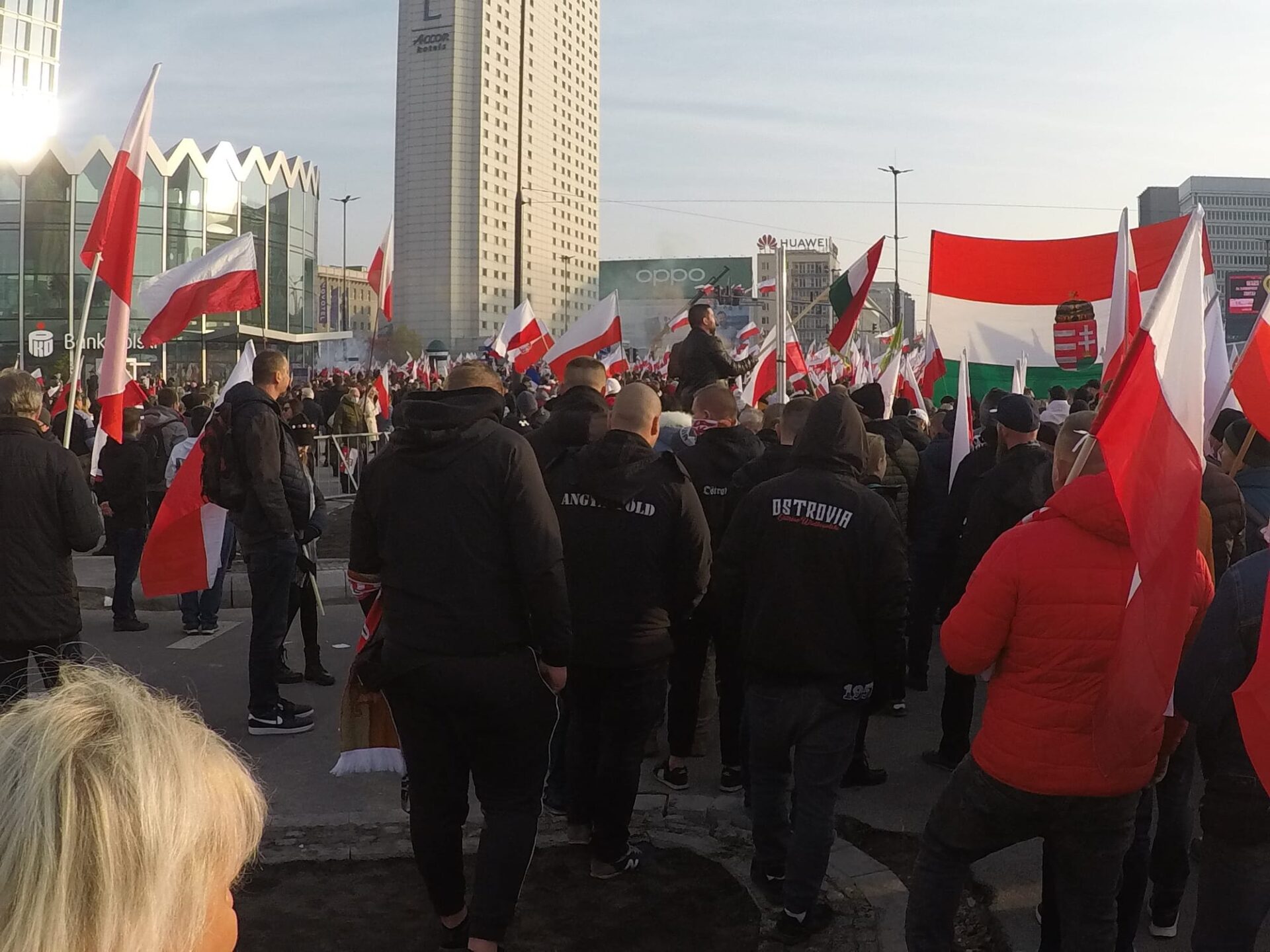
Football hooligans from Hungarian XIII District group marched alongside hooligans supporting Ostrovia Ostrów club, Warsaw, 11.11.2021. Source: Mariusz Sepioło
What else can be found on Ouest Casual channel? Not so long ago, one of the posts covered a march „commemorating the victims of World War II” that took place in Wunsiedel, Germany. It is a town where Rudolf Hess was buried. His grave was relocated by authorities because it attracted crowds of neo-Nazis each year. In 2021, the march was organized by Der III. Weg – a neo-Nazi party formed by former members of NPD. Der III. Weg means third way in English.
Our sources with access to polish nationalists suggest that members of Der III. Weg might have participated in Warsaw march, but we found no evidence of that on photos or videos posted on social media by Polish and European nationalists.
We fight for the same thing!
The march moves through Warsaw. A nationalist from Hungary yells in broken Polish at the top of his voice: “Raz sierpem, raz młotem, czerwoną hołotę!” (Use a sickle, use a hammer, smash the red rabble).
At the back of the column (and sometimes alongside it) march the members of Italian Forza Nuova and Lotta Studentesca. Who are they?
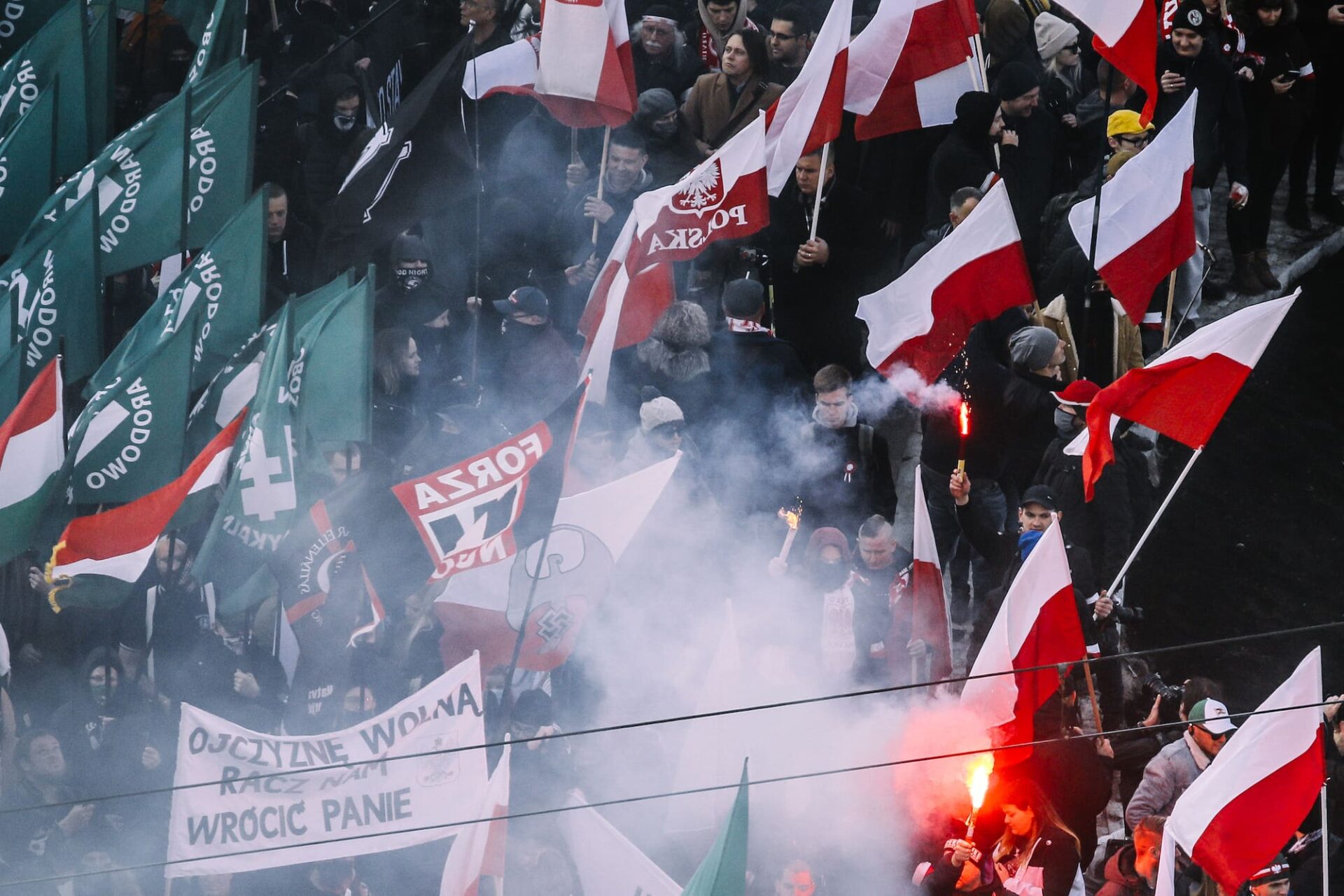
Independence March, Warsaw, 11.11.2021. Source: Kuba Kaminski / @instkaminski
Forza Nuova (Italian for New Force) is a party led by Roberto Fiore, a well-known European nationalist. It was founded in 1997. Members of Forza Nuova promote racist ideas, want to outlaw abortion and homosexual unions, and advocate abolition of laws that prohibit popularization of fascism, hoping for a National Fascist Party restoration. Between 2003 and 2006 FN was a part of a bigger coalition led by Alessandra Mussolini, Benito’s granddaughter.
Italians has been coming to Warsaw for years. “We have the same ideas as ONR. Of course, Forza Nuova is a political party, and ONR an organization, but we fight for the same thing”, said Andrea di Cosmo, a member of FN, in 2019.
Roberto Fiore visited Poland in 2020. He met with Grzegorz Braun, a member of the Polish parliament and one of Confederation Liberty and Independence leaders. During the conversation, Fiore emphasized the connections between his family and fascism: “I am a son of a fascist (…). Benito is my sixth name”, he said.
Polish nationalists visit Apennine Peninsula with equal eagerness. In 2018 a group of ONR members came to Rimini, where it “patrolled” the beaches after dark, looking for illegal immigrants, aided by Forza Nuova activists.
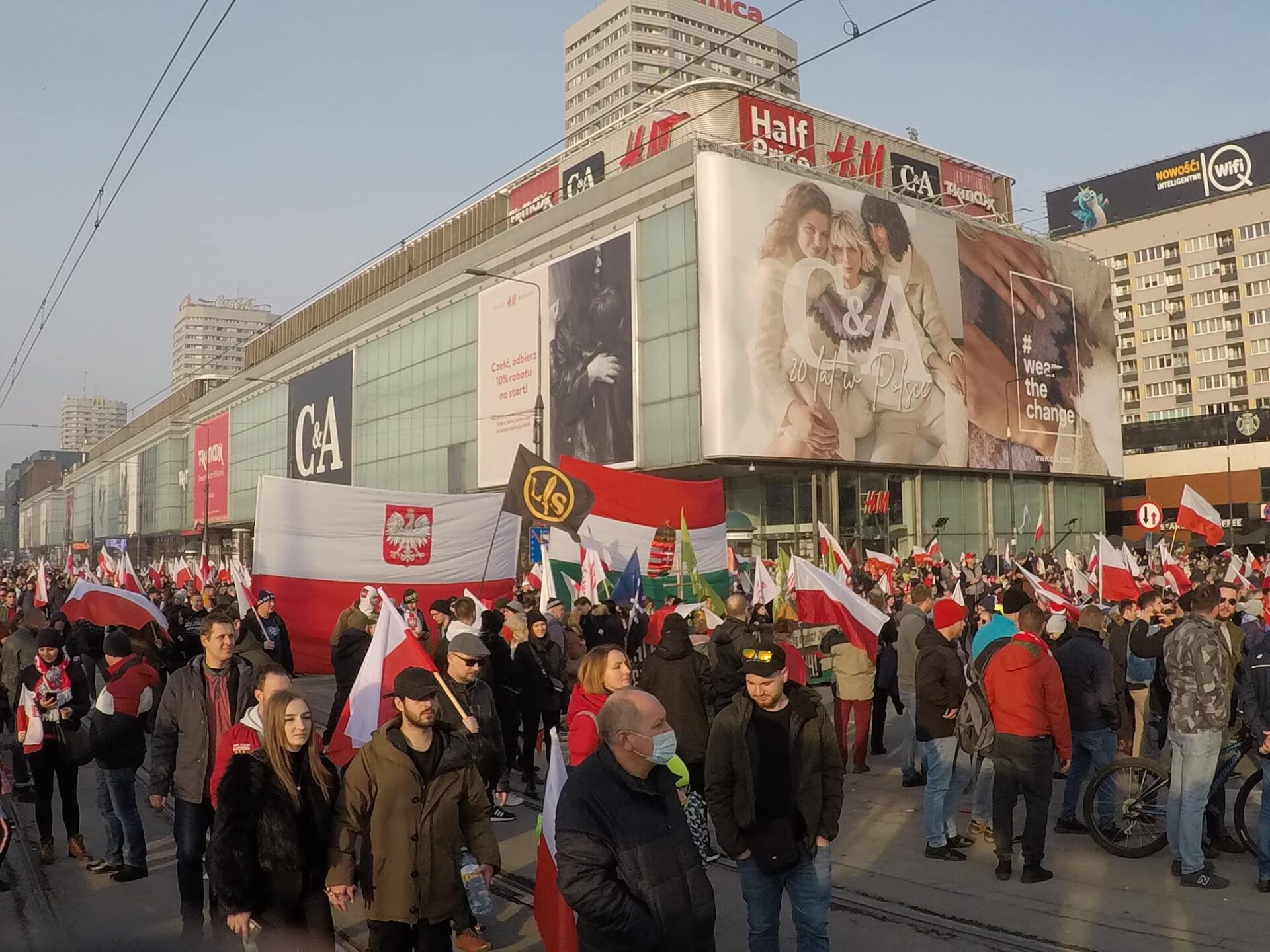
Activists from a youth organization called Lotta Studentesca, Warsaw, 11.11.2021. Source: Mariusz Sepioło
Members of Forza Nuova, who visit Warsaw, are accompanied by activists from a youth organization called Lotta Studentesca. Its goals are similar to the goals of All-Polish Youth (Młodzież Wszechpolska), which is promoting nationalist ideas among teenagers and young adults.
Guardians from Visegrád
For years, Warsaw has been a rallying point for middle-European nationalists. A November march is the only large-scale event that allows them to show their banners openly.
Members of a Hungarian party Mi Hazánk Mozgalom (Our Homeland Movement) forms their own block and march under an enormous flag of Hungary with a banner informing that: “This fight is for Europe”. Mi Hazánk is considered a radical, far-right, couch party tied to Viktor Orbán. Its leader, László Toroczkai, is also a mayor of Ásotthalom, a village that lies near the border with Serbia. He voices his hostile political views towards neighbors quite openly. For example, Toroczkai wanted the state to confiscate all the property and belongings of immigrants that cross Hungarian border.
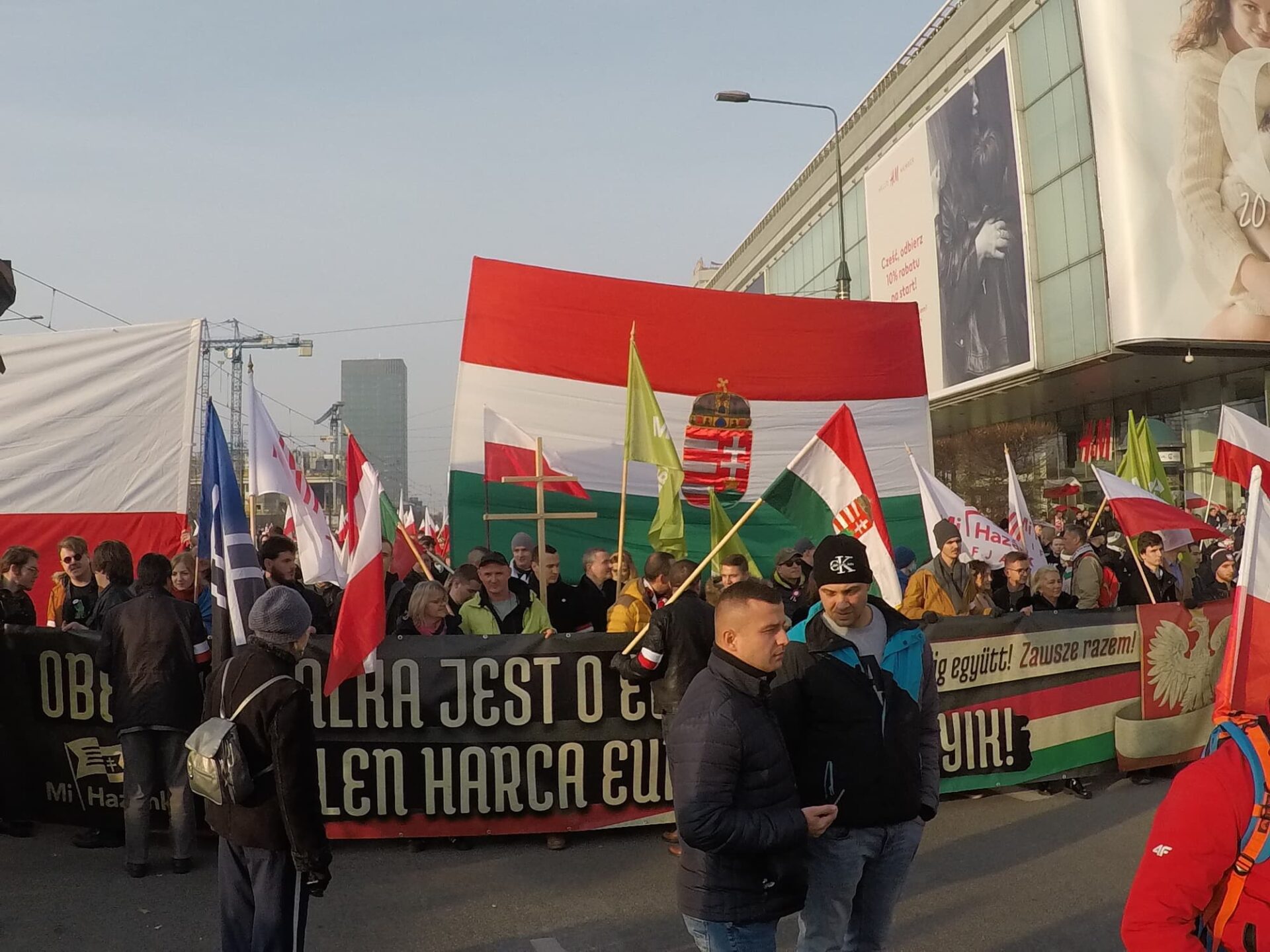
Members of a Hungarian party Mi Hazánk Mozgalom, Warsaw, 11.11.2021. Source: Mariusz Sepioło
Mi Hazánk has been working with Polish nationalists for years. A delegate of Mi Hazánk youth group, Pál Walter, visited Łódź in 2019 at the invitation of Social Education Club ProPolonia (Klubu Edukacji Społecznej ProPolonia) and Roman Dmowski’s Club (Klubu im. Romana Dmowskiego). The latter organization became famous for inviting Stanisław Michalkiewicz, who frequently made anti-Semitic remarks during public meetings.
We have ambitions and hard fists
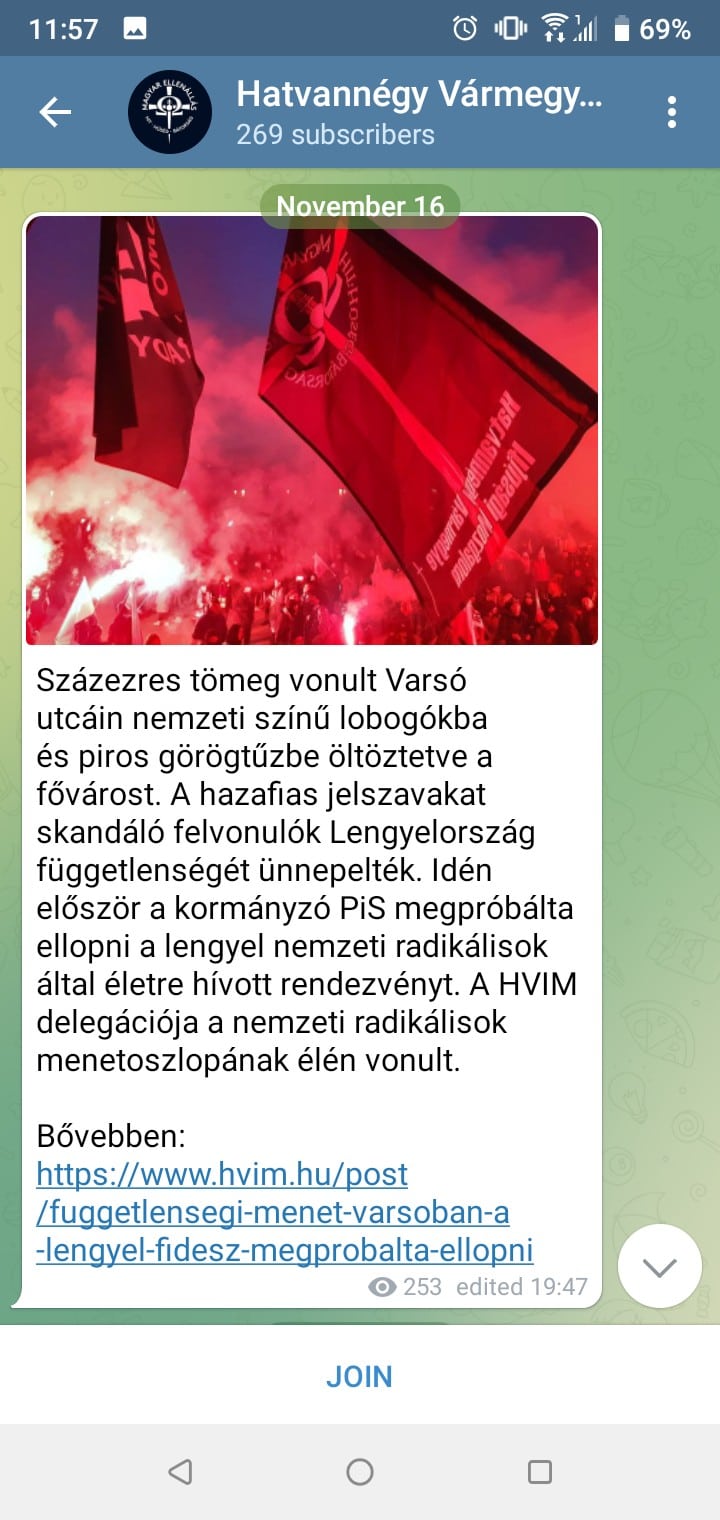
Post of Hungarian HVIM, Source: screenshot from Telegram
People from a Hungarian HVIM marched in the Nationalists Column alongside members of Forza Nuova and ONR. In 2001, prior to founding Mi Hazánk, Toroczkai founded HVIM – Sixty-Four Counties Youth Movement. Sixty four counties existed before the Treaty of Trianion (that defined national borders after World War I). The name is an open reference to a Greater Hungary ideology. HVIM organizes marches commemorating the defense of Budapest by Waffen SS troops in 1945. Those events attract neo-Nazis from organizations such as Blood & Honour and Carpathian Sich.
Toroczkai’s movement has big ambitions and not many scrupules. Plus, it has hard fists. In 2011 HVIM members attacked five men who spoke Serbian, hitting them with metal rods. And they did it on the Serbian part of the border. In 2015, other HVIM members, Romanian Hungarians, were arrested because they’ve allegedly tried to plant a bomb in a town of Târgu Secuiesc during the Romanian Independence Day. (They were tried and sentenced in the second instance to five years in prison.)
Ethnic patriots from Estonia
Laszlo Toroczkai not only attends marches, he also likes to take the floor himself. “Nowhere in the whole wide world have I seen so many patriots. The whole of Europe can be proud of you”, he said in 2015.
When he mentioned building a wall on the Serbian border, Poles gave him a big round of applause.
In this year’s crowd one can spot nationalists from Belarus, Spain and Estonia. A white, red and white flags of Belarus attract particular attention. They are carried by a large group of Belarusians. We look for them on Telegram. The march is covered by an account called “novyzolak”. It advocates “white, Belorussian nationalism”, and publishes content that indicates ties with Ukrainian Right Sector. “Novyzolak” also posts neo-Nazi graphics, and through “friendly accounts” promotes Young Front, a Belorussian dissident organization that has its own paramilitary faction. (Which also happen to cover the march on vk.com.)
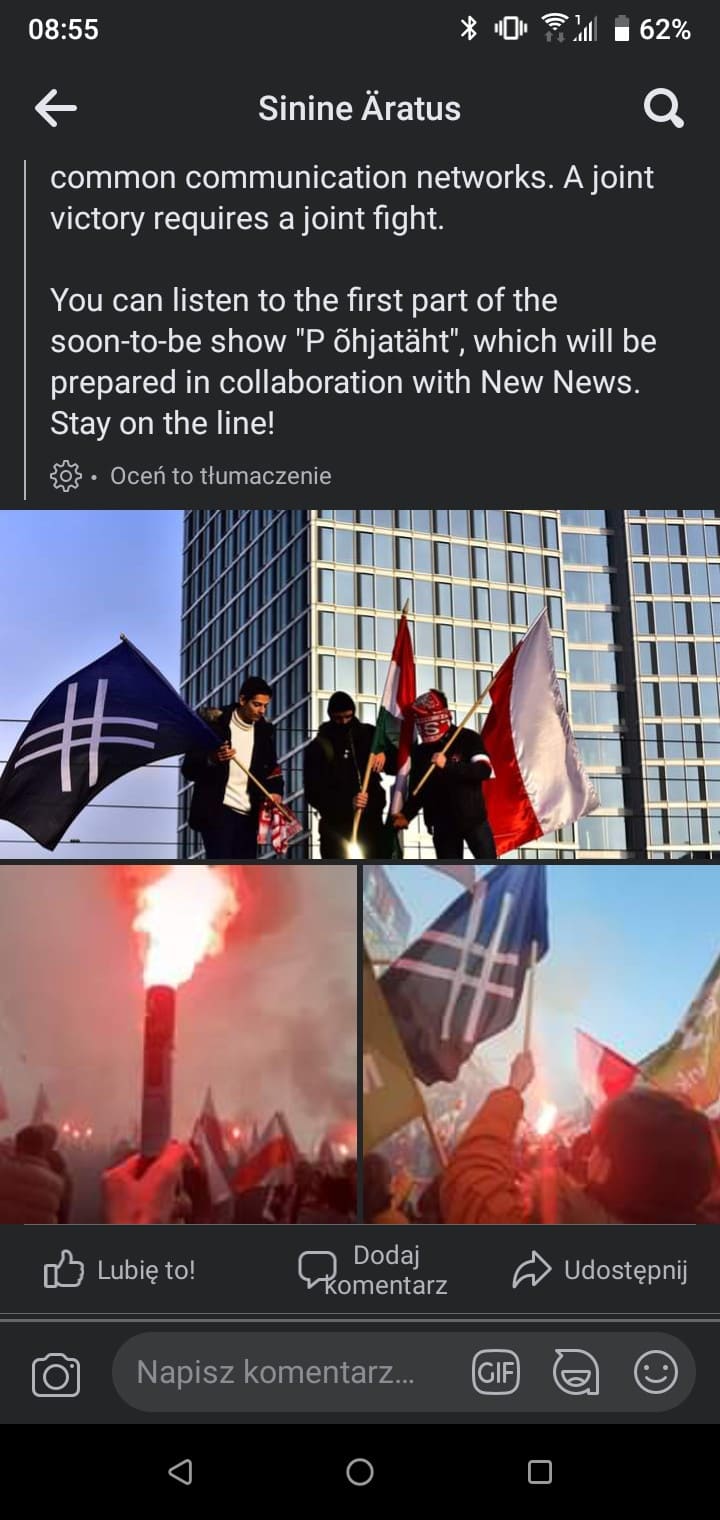
Sinine Äratus post. Source: screenshot from Telegram
From the sea of emblems we husk the symbols of Estonian EKRE (Eesti Konservatiivne Rahvaerakond – Conservative People’s Party of Estonia) that is becoming more and more popular. Members of its youth organization – Sinine Äratus – join the National Column. The Blue Awakening is known for hosting Etnofutur, a conference on “ethnical future” of Europe. This year the organizers invited Janusz Korwin-Mikke, American alt-right youtuber Paul Ramsey, and Olena Semenyaka who is often referred to as a „First Lady” of Ukrainian National Corps.
Proud sons of a nation
And what Polish organizations form the Nationalist Column?
The official host of the event posted on Facebook, and the group that promotes the march, is called National Brigades. It was put together by ONR (Obóz Narodowo-Radykalny – National Radical Camp) in response to Women’s Strike (anti-government protests that started in 2020 in reaction to tightening the abortion law). Brigades describe their goal as a “work that will form Political Soldiers. Conscious and aware Poles, spirited and attached to ideas (…) who will be ready to defend catholic and national values through direct actions.”
Marchers carry long banners. By reading them, one can see that the core of the march is made of regional organizations. There are more than a dozen of them, every medium-sized city has at least one, and all consist of several dozen active members.
There are flags of Nationalist South made of Lesser Poland Patriots, Tarnów’s National Camp and ONR Podhale, flags of Social Alternative (small group of anti-capitalist nationalists), and flags of smaller, local groups, like National Piaseczo, National Częstochowa, National Toruń, Patriotic Suwałki.
But the main core of the column is made of ONR members – an association registered in 2012. The name, the uniforms (brown or black shirts, green armbands), and the logo (“phalanx” on a green background) are a nod to a short-lived, interwar ONR that was active in 1934. Robert Bąkiewicz, the organizer of the march, was its member once but left it in 2018. The official reason for his departure was “a difference of opinions concerning the idea of growth.” The Camp turned even farther to the right after that.
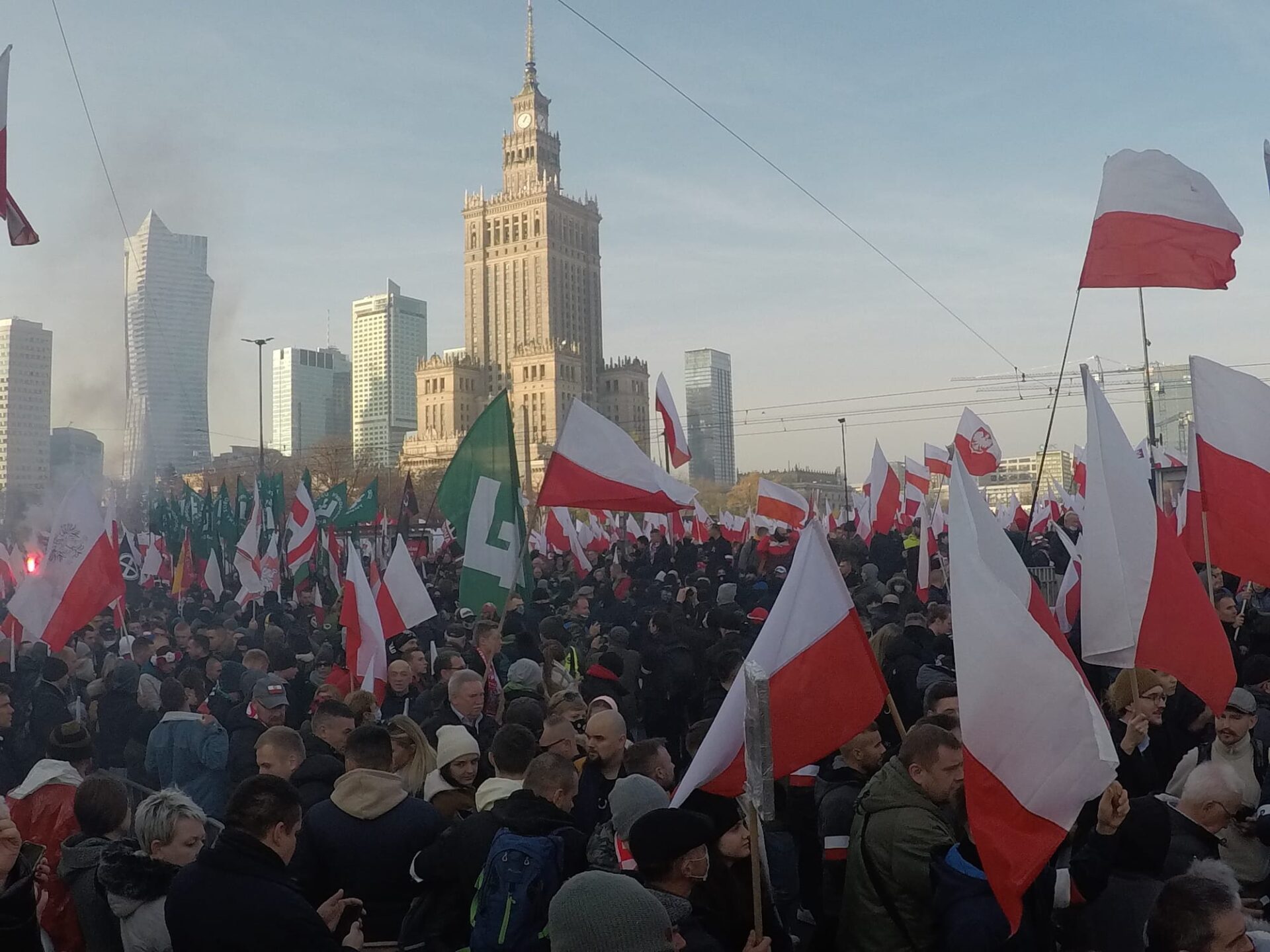
ONR, Warsaw, 11.11.2021. Source: Mariusz Sepioło
Today, ONR has “brigades” in every voivodeship, and in several cities abroad (i.e. in London, Madrid, Rome). In 2015, it withdrew from the National Movement. Its members don’t run for office, but work at the grass roots instead – deliver lectures, organize training courses, shooting practices, and trips abroad.
Our fathers from NSDAP
Alongside ONR march Autonomous Nationalists (AN), a conglomeration of informal groups active both in Poland and Europe. They came to being at the turn of the century as a faction in a skinhead subculture. Apart from ideas typical for every nationalist group AN members profess strong dissent towards capitalism. It’s a legacy dating back to 1930s, when capitalist ideas where questioned by Nazis grouped around brothers Otto and Gregor Strassers, members of NSDAP “left wing” fraction. Flags belonging to the followers of Strasserism also flutter above column’s ranks.
AN members use “black block” tactics during protests, which they adopted from anarchist groups. They wear black clothes, masks, and balaclavas to conceal their identities from the police. They use any mean they deem necessary, and sometimes carry weapons. For many years they were known in Poland simply as a “Black Block” (the name went out of use gradually). Autonomous Nationalists protested in Warsaw in 2017 as BB, when they unfurled the infamous banner stating that “Europe is going to be white or desolate.” Today, Polish “autonoms” (grouped around autonom.pl portal) number White Boys Greater Poland, White North Crew, National Offensive, and local groups active in more than dozen cities.
Moreover, AN has ties to smaller but important, in terms of ideological influence, groups: Niklot, Stormers, and the Third Way.
Black sun and general Franco
People from the Association for Promoting Tradition and Culture Niklot can be seen in the crowd as well. Niklot was founded in 1998, and dates its roots to an interwar movement called Zadruga – a nursery of a very specific, anti-Christian nationalist ideology. Its members are not only nationalists, but also neo-pagans and Rodnoverians – they practice religion based on Slavic myths. Niklotians use “toporzeł”, a double-bitted axe with a head of an eagle, as their symbol, though they were seen with “black sun” insignia, a Slavic swastika variant, as well.
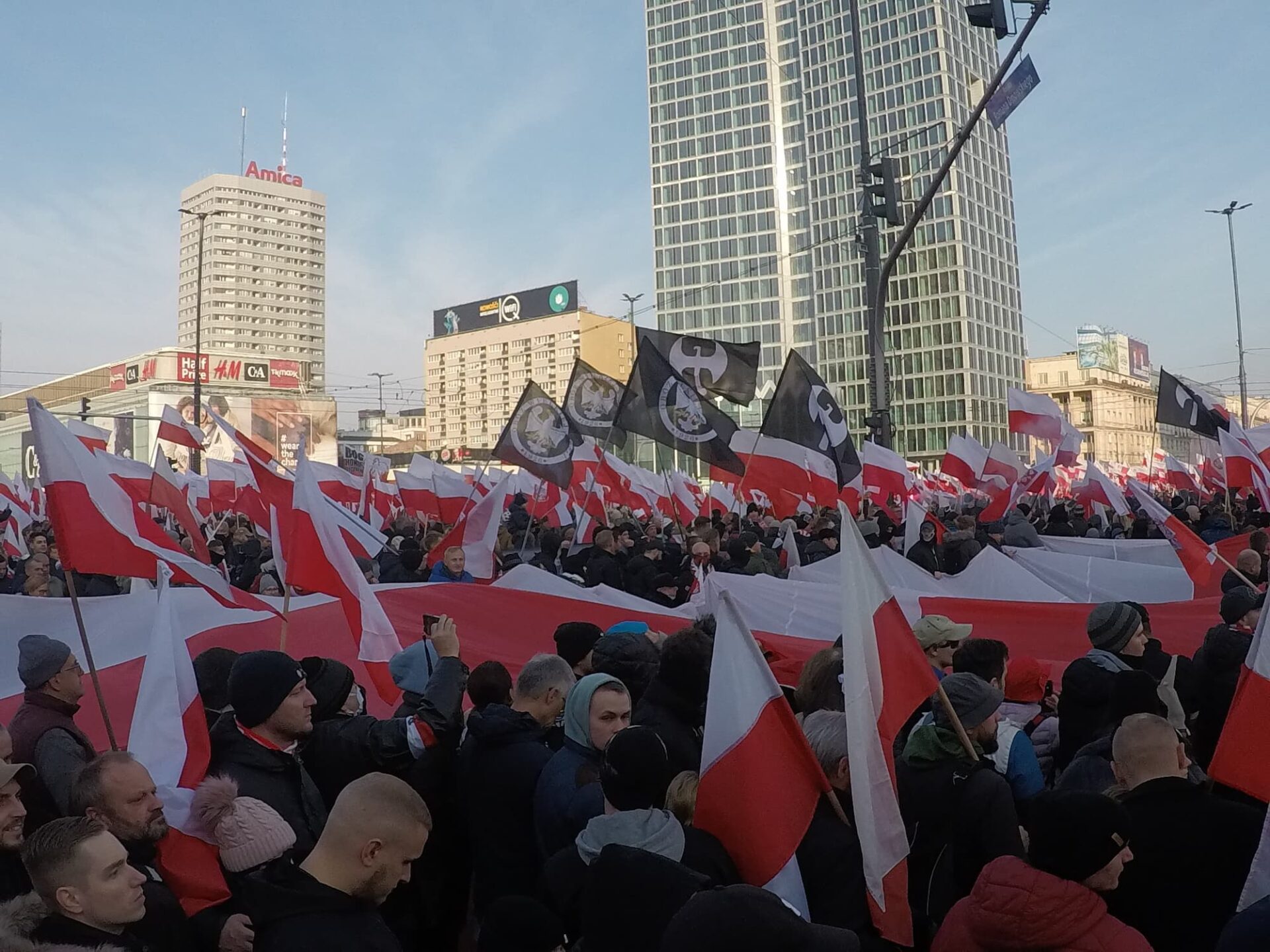
People from the Association for Promoting Tradition and Culture Niklot, Warsaw, 11.11.2021. Source: Mariusz Sepioło
Tomasz Szczepański, a historian and Katyń Museum employee, became Niklot’s chairman in 1998. He was fired from many schools in Warsaw (he worked as a history teacher) for promoting radical ideas. Szczepański publishes in far-right quarterly journal Glaukopis that glorifies general Franco and Polish interwar fascists.
Another important figure is Niklot’s treasurer Grzegorz Ćwik. He is also an editor-in-chief of periodical magazine Storm, and leader of a different group that, until recently, played quite a crucial role on a far-right stage. Stormers’ activities were covered by Przemysław Witkowski in Krytyka Polityczna. “Aware of history and tradition, we look to the future with our heads held high, because within this future lies a way of restoring the Polish Nation to its greatness”, states their ideological manifesto. “With ranks of our forefathers standing behind us, we know that there is no other way than fight and ultimate victory.”
Colleagues from a Wolfsangel
In February of 2018, Stormers distributed leaflets on the premises of Warsaw University campus. “Polish death camps? Learn the truth!” enticed the front page. Inside, authors implied that Jews collaborated with Nazis during the war. In 2019, Stormers put up posters on windows of restaurants serving vegan food that said: “We will fuck you up, you leftist cunts”, and “Never enough racism and fascism in the Tricity. Greetings, Stormers.”
Ćwik is known not only to the nationalists but also to the police and other forces. He was detained in 2019 by officers of ABW (Internal Security Agency), and charged with hate crime. Prosecutor’s office is still compiling the evidence.
Stormers openly admitted to working with Ukrainian Azov Regiment, a unit of Special Tasks Patrol Police formed in 2014 as a response to the activities of pro-Russian separatists in Donbas. It is a far-right and radical group that use, according to journalists of a German television Deutsche Welle, Nazi symbols (mainly Wolfsangels used by formations of Waffen SS). Journalists of Der Spiegel reported that Azov Regiment recruited volunteers during neo-Nazi bands festival in Themar, Thuringia. Recruiters enticed Germans to enlist with “the best”, in order to save Europe from upcoming fall. One of Azov’s members told a journalist of The Telegraph: “Personally, I am a Nazi.”
Vaccines bad, Putin good
Next to Niklotians march members of OWP (Obóz Wielkiej Polski – Camp of Great Poland). It is a somewhat forgotten, radical group that models itself upon an organization founded in 1926 by Roman Dmowski. OWP was reactivated 18 years ago. Lately, its members were seen during anti-vaccine protests, like the one organized on 2nd of October in Warsaw, which was called a March for Sovereignty and Freedom (politicians and activists from Confederation Liberty and Independence and National Movement participated in this event under a banner that said “Stop sanitary segregation”). OWP was accused of harboring pro-Putin sympathies in the past. In 2014, one of its members, Dawid Hudziec, joined pro-Russian separatists in Donbas, where he remains to this day.
OWP leaders – Dawid Berezicki and Wojciech Wojtulewicz – received funds for anti-Ukrainian campaigns, and reported their outcomes to Aleksandr Usovski, a Belorussian/Russian nationalist socialist, who distributed money from Russian oligarchs to national movements active in Eastern Europe. This behind the scene practices were covered by vsquare.org journalists in 2017.
„Who will stand against us?”
Robert Bąkiewicz shines on the scene.
In front of him stands a crowd of people holding flags, banners, flares and loudspeakers. Some people standing in the ranks of Nationalist Column mock him, accusing of submissiveness towards PiS (Law and Justice ruling party).
Behind him are his political backers and members of Polish parliament, Janusz Kowalski and Anna Maria Siarkowska.
Kowalski is a member of United Poland (Solidarna Polska) and a politician close to Zbigniew Ziobro, current Minister of Justice. He never shies from criticizing European Union.
Siarkowska founded a parliamentary team for dealing with “sanitarism”. She is an avid opponent of COVID-19 vaccines, and at the same time advocates the need to arm teachers as a response to growing aggression among polish teenagers.
All listen to Bąkiewicz’s speech: “The only backbone, the only foundation upon which there can be peace, prosperity and order, is Christianity. We have to rebuild it. If God is with us, who will stand against us?”
Cars destroyed with patriotic zeal
Those smaller and bigger groups of neo-fascists may look exotic and harmless, but as a migrant crisis at the border with Belarus adds fuel to existing tensions, local nationalist organizations spring into action.
Few days before 11th of November, members of Niklot’s Białystok division, National Hajnówka and National Białystok announce the creation of “national patrols”. Their purpose? Searching borderlands for immigrants and delivering them to Border Guard.
“We are not going to sit idly as the next wave of immigrants floods our homeland thanks to a flawed law, and liberal and left-wing activists”, they posted on social media. “Our forefathers consecrated this land and this border with their own blood and the blood of our enemies. Today, as Poles and nationalists, it is our duty to protect them. Called to service by the people of Podlasie, and alongside Nationalist Białystok – AN, we form National Patrols in borderlands areas not mentioned in the state of emergency act.”
It is highly likely that nationalists from Podlasie destroyed cars belonging to Medics on the Border (Medycy na Granicy) on 14th of November. That case was covered by Newsweek journalists. Police stated only that they have arrested culprits tied to football hooligans groups, but we have managed to confirm that at least one of detainees, a woman, has ties with Niklot.
Few days after the police arrested three suspects, nationalists started to raise funds for “victimized patriots” through social media. We have checked and confirmed that the information about the fundraiser was shared through Telegram channels moderated by members of foreign nationalist and neo-fascist organizations. When we posted this article, nationalist managed to raise 13 000 of 30 000 zlotys. The fundraiser is still on. To our best knowledge, 30 000 zlotys is the sum mentioned in the loss assessment for windows and car bodies smashed with axes.
Mariusz Sepioło, Julia Dauksza, (FRONTSTORY.PL). Cooperation: Anastasia Morozova/FRONTSTORY.pl, Márton Sarkadi Nagy/Atlatszo, Tomas Madlenak/ICJK
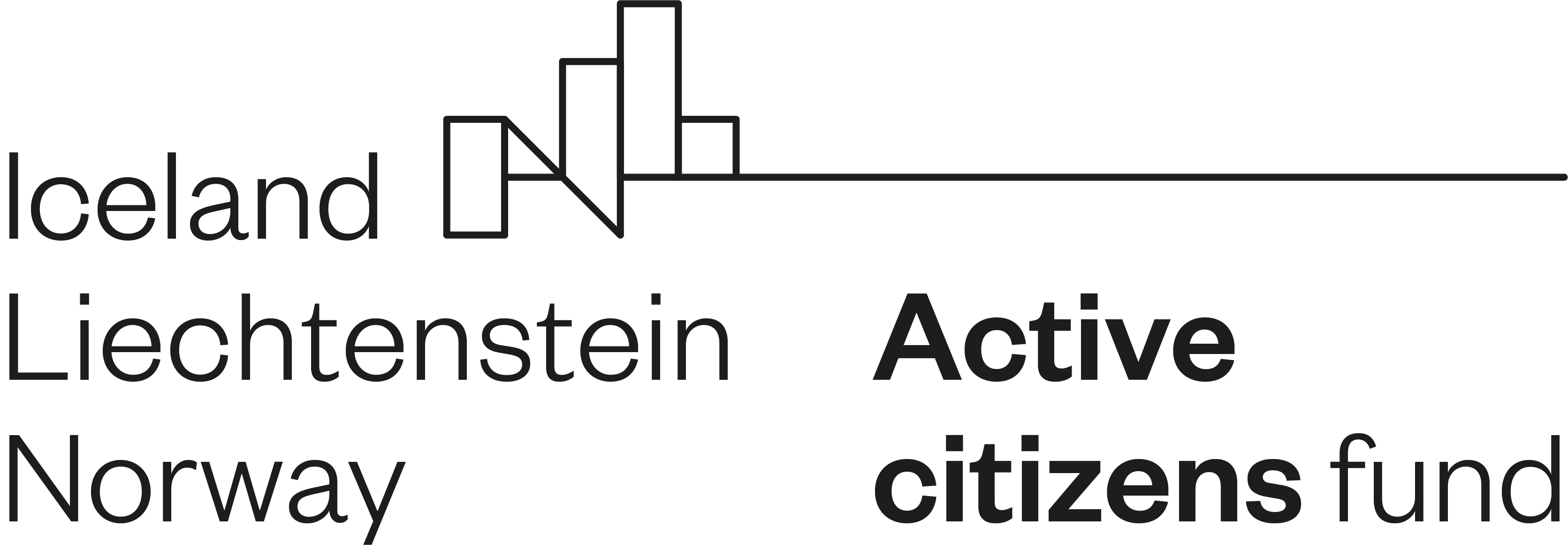
This investigation is a part of an ongoing project called “From disinformation to hate” carried out through an Active Citizens fund (fundusz Aktywni Obywatele).
Support independent investigative journalism
in Poland, you can donate here.
Polish investigative outlet created by Reporters' Foundation.

